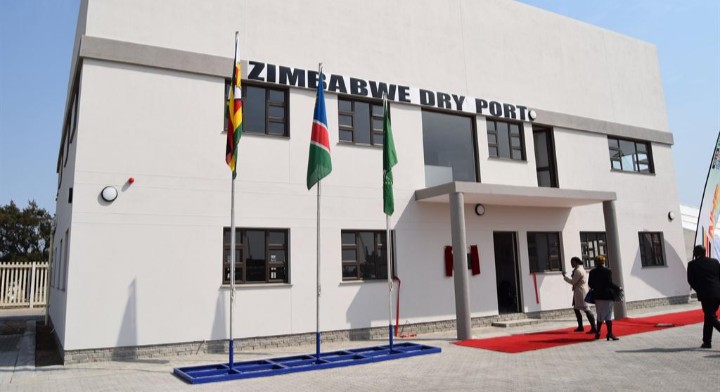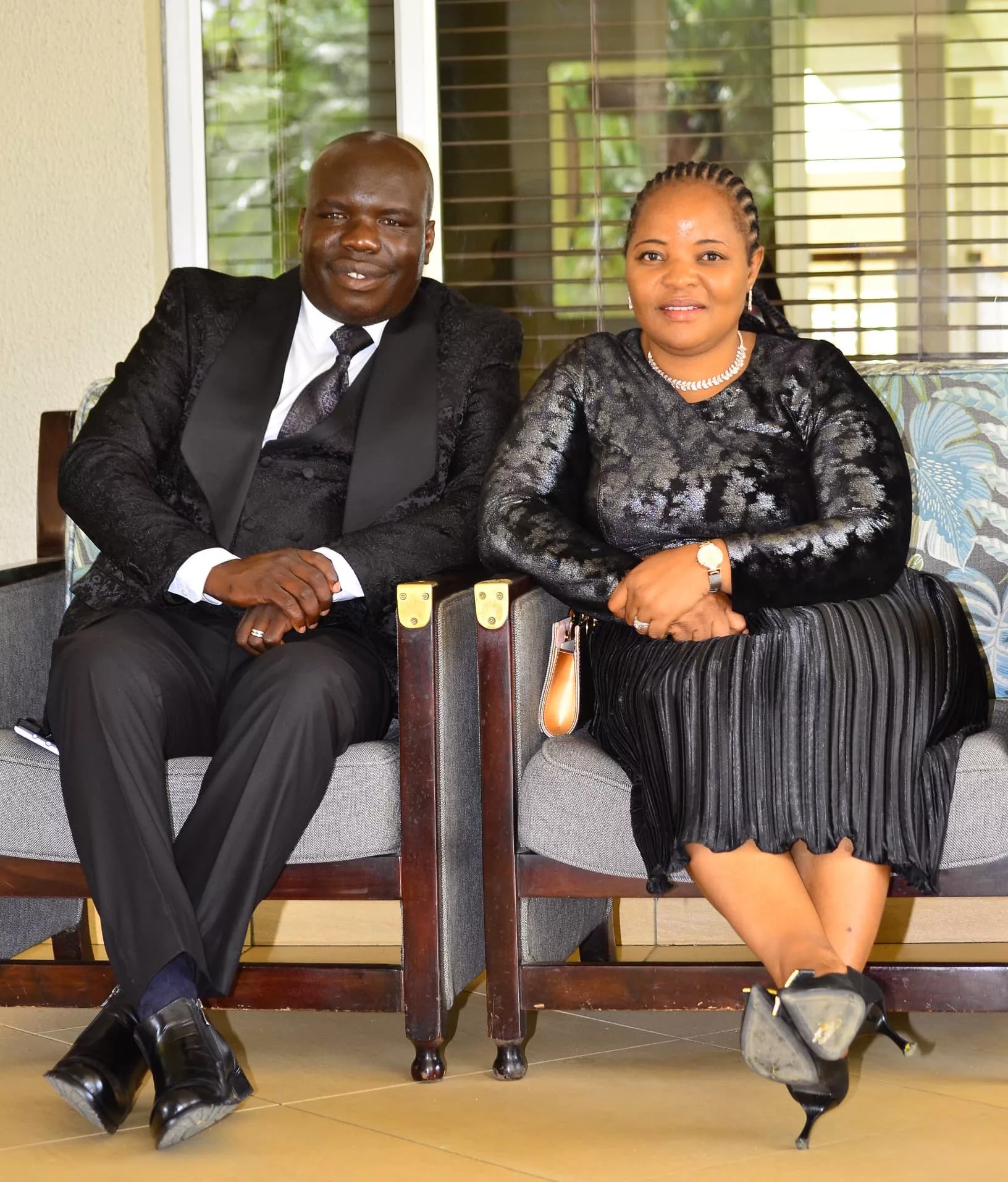|
Getting your Trinity Audio player ready...
|
Zimbabwe and Namibia continue working together towards harnessing Intra trade between the two nations following the commissioning of the Zimbabwe Dry Port in Walvis Bay in 2019 by President Emmerson Mnangagwa.
In a two-day Zimbabwe Namibia Bi-National Commission and investment roadshow information session which rounded up on Tuesday with deliberations that focused on strengthening Intra trade between the two republics, it emerged the dry port will further broaden the prospects of the two countries’ companies to increase trade within the context of African Continental Free Trade Area (AfCFTA) by promoting inter-African trade.
The discussions were also centered on underpinning the progress in the operationalisation of the Zimbabwe Dry Port courtesy of the Namibian government highlighting that the development has the likelihood of being one of the greatest things to happen to logistics and trade in recent years.
The two nations discussed how the beginning of the Walvis Bay corridor roadshow can streamline the process to remove unnecessary rigidities, bottlenecks, and roadblocks to ensure a smooth flow of goods and services between Zimbabwe and the dry port.
Also, the road show’s main thrust was to ensure that there is a conducive business environment and interface between Zimbabwe’s business people and Namibians.
The show was expected to have been held from 18 June to 3 July 2021 but was postponed indefinitely because of the Covid-19 pandemic.
Speaking during the NAMPORT/ WBCG-Zim meeting in Harare on the 11th of October 2021, the Deputy Minister of Foreign Affairs, Cde David Musabayana said the successful implementation of the dry port concept will have the joint effects of lessening congestion, alleviating pressure on storage space, and reducing handling operations in the Walvis Bay Port as well as delivering lower transaction costs to traders.
“It is my understanding that the show is coming at the right time after the successful launch of the Zimbabwe Walvis Bay dry port by HE Dr. ED Mnangagwa in 2019 and the recent development in finalising the hard infrastructure at the dry port.
“You have shown your seriousness in making the corridor and the dry port effective by opting to travel all the way from Walvis Bay by road to Harare, some 2 300km journey. Your experience will provide great insight on what needs to be done to make cross-border trade effective as you market the Walvis Bay Port and assess the challenges that users of the two corridors (Trans Kalahari and Trans Caprivi linking the port and Zimbabwe encounter,” said Musabayana.
He added that the dry port also benefits Namibia by having increased volumes of freight cargo moving through that port through the capturing of cargo closer to the source and or further up the supply chain.
“This means the growth of the corridor resulting in increased revenue for the Namibian government. It will also assist in easing congestion on the Walvis Bay Port as well as ease smuggling.”
As Zimbabwe focuses more on trade as a stimulant for economic development, Musabayana said, shifting from the traditional pillars such as foreign direct investment (FDI) and multilateral agency lending was imperative for Zimbabwean merchants to be careful not to mishandle the courtesy and hospitality of their host.
“This means being vigilant against nefarious activities such as smuggling, illicit trade in drugs, arms and ammunition, human trafficking, and other vices. Sound infrastructure development is a prerequisite to the successful implementation of the dry port. Inter and multi modalism are an important consideration hence the need for investment in transport interchanges and terminals.”
He said the recent operationalisation of the Kazungula Bridge will open new opportunities for the dry port in a very significant way.
“On the soft infrastructure aspects, there would be a need for great coordinated border management among Namibian, Botswana and Zimbabwe customs officials as well as developing the existing bilateral trade agreements and corporation frameworks that are in place.
“This will be in addition to finding creative and holistic strategies to assist Zimbabwean trackers to be competitive in international markets.”
However, the deputy minister pointed out that the use of the Walvis Bay Port seems to have a cost disadvantage as compared to ports like Durban due to one-way cargo which he said needs to be solved collectively by public and private sectors.
“It is not easy to find return cargo in Walvis Bay unlike in Durban or Johannesburg where return cargo is often readily available. Hence Walvis Bay corridors need to increase not only the total throughput but also the availability of return cargo at the end of the corridor, that is Francistown/Harare. This is one of the key elements required to reduce the trucking cost of linking the port and hinterland.”
On the sidelines interview, Deputy Minister Musabayana said Zimbabwe as an economy was now focused on intra trade following the President’s pitch of making Zimbabwe an upper middle-income economy by 2030.
“To achieve that, we need to set the correct fundamentals. The fundamentals that are critical and that can underpin that trajectory or sustain that growth is an ecosystem that thrives on trade.”
Trade, he said, must also facilitate the country’s export strategy 714 indicating that to achieve that, export strategy there was need for an efficient and efficient transport system.
“We need to be linked within Africa and outside Africa. So at the moment, we have Durban and Beira as the ports of entry but we need more redundancy in terms of that network and Namibia and the Zimbabwe dry port in Namibia is an alternative route and as I look at it, it’s a green ocean where there was less competition. Therefore, we are encouraging our business people to start focusing on this new route with less competition.”
Nicklaas Kandjii, Namibia’s ambassador to Zimbabwe said the development was a commendable move for both countries and emphasised that there was a need for Zimbabwe and Namibia to wisely use the opportunity.
“The bilateral relation between Zimbabwe and Namibia is very excellent politically but economically we need to match this relationship so this is our effort to strengthen trade and investment,” said Kandjii
He highlighted that this was also providing an opportunity to link Zimbabwe to Namibian port to facilitate exports to Europe, West Africa, and Americans.
“So this is a very important event for both countries. Remember the two presidents inaugurated this dry port and instructions were very clear that we should take action and make this dry port work. This is to show the seriousness of the cooperation between the two countries.”
The Ambassador of the Republic of Zimbabwe in Namibia, Rofina Chikava said the Namibian trade delegation was committed to promoting trade between Zimbabwe and Namibia as well as promoting the Zimbabwe dry port.
“The essence of the delegation is to promote trade between our two countries. The other element is that we want to promote the Zimbabwe dry port which is our asset as the government where we want our people to use that facility for exports and imports. We have very good bilateral relations because you find that they are not many countries who can give a country space to have a dry port so business people should take advantage of this development.”
She said business people should take the promotion development and use it to their advantage considering that the time spent when shipping goods via the Walvis Bay and the dry port is short as compared to other entry points.
“Walvis Bay is not congested. We have very few congested scenarios at the port. So the issue is that when you are importing your things here in Zimbabwe you have to look at the cost and cut days because when people go to other ports they can spend about two weeks ago the port but with the Namibia Walvis Bay we look at three days and using our dry port we look at two days and the goods will be shipped out to Zimbabwe. So Zimbabwean, we should take this promotion seriously.”
She added that more employment opportunities for young people were going to be created for those who want to export and import.
“We are looking beyond the two countries. We are looking at Africa, the Free Trade Area. We should take advantage of the Free Trade Area and take our goods to Western countries through the Walvis Bay Port. Everyone should take advantage of the Walvis Bay Port and the Zimbabwe Dry Port,” Chikava added.
Situated on the Atlantic Ocean, Walvis Bay is 2 300km from Zimbabwe’s capital city, Harare. It provides a gateway to West and African markets as well as European and American markets.






